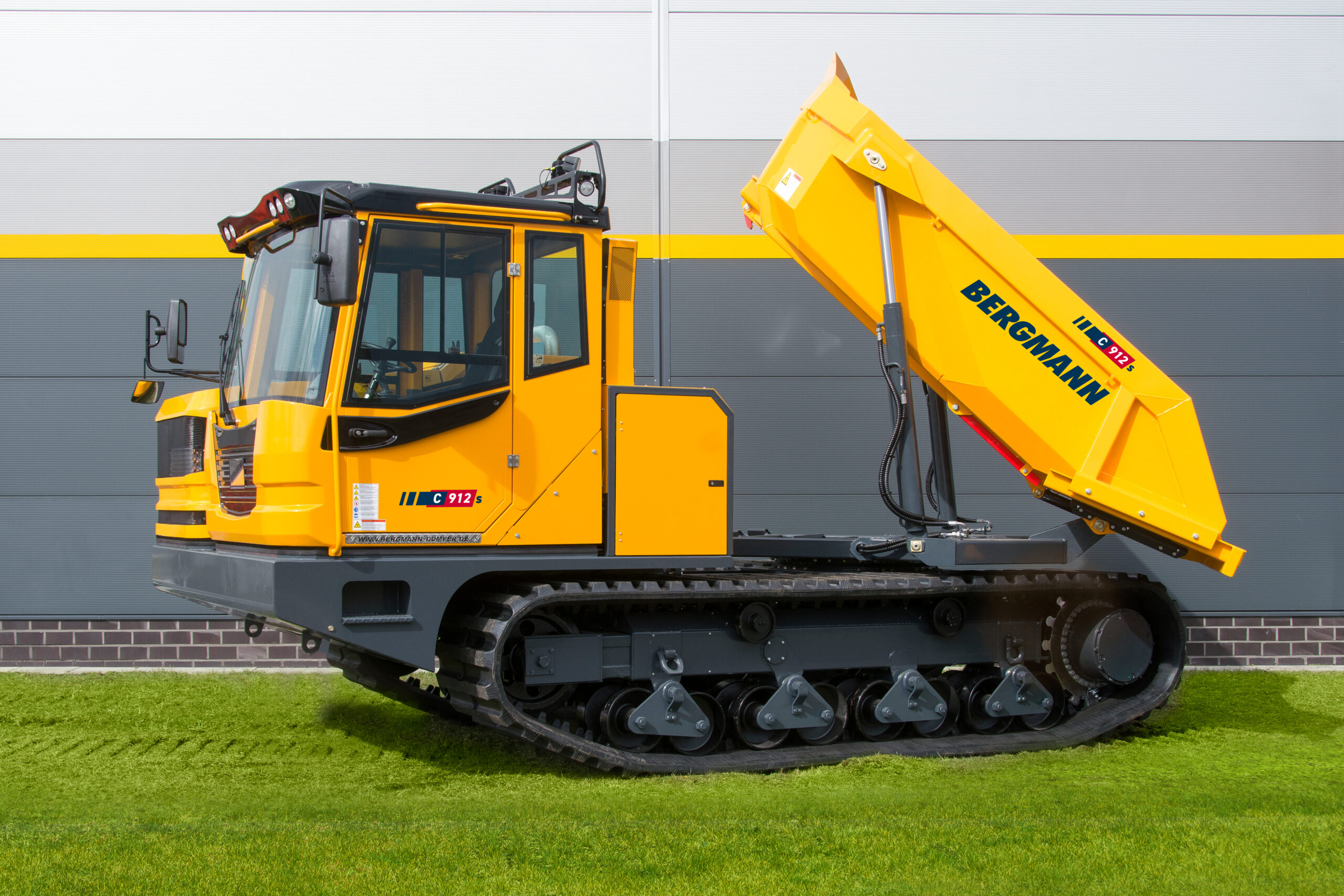What Is a Tracked Dumper? Uses, Benefits & the Bergmann 912s
Tracked dumpers are rugged, all-terrain hauling machines designed to go where wheeled vehicles can’t. Built for soft, slippery, or uneven ground, they bring the traction, stability, and muscle needed to conquer tough jobsites. In this post, we’ll break down what they are, what they’re used for, and why the Bergmann 912 is a top choice for demanding conditions.
What Is a Tracked Dumper?
A tracked dumper is a piece of off-road hauling equipment that uses rubber or steel tracks instead of wheels. This design helps distribute the vehicle’s weight more evenly, reducing ground pressure and improving traction on difficult surfaces like mud, sand, snow, and steep slopes.
Tracked dumpers come in various configurations and sizes, from compact models to heavy-duty machines like the Bergmann 912s, which is engineered for high productivity in rough terrain. These machines are often used in construction, mining, environmental restoration, utility work, and more, basically anywhere mobility and material hauling come together in extreme or sensitive conditions.
Meet the 912s
Our dumpers combine innovation with durability, and the 912 is a high-performance tracked dumper designed with the operator in mind and the jobsite as its playground.
Key Features of the Bergmann 912s
Tracked Undercarriage
- Wide rubber tracks provide excellent flotation and traction across soft ground, steep grades, and slippery conditions.
- Low ground pressure makes it ideal for sensitive terrain like wetlands or landscaped areas.
Payload & Dumping Power
- The 912s offers a payload capacity of up to 22,046 lbs, making it ideal for moving serious material fast.
- The large, rear-hinged dump bed is hydraulically powered for fast, efficient offloading.
Operator Comfort & Visibility
- Spacious cab with ergonomic controls and high visibility all around.
- Optional air conditioning, suspension seating, and heated features make long days more comfortable.
Compact & Maneuverable
Despite its power, the 912s has a tight turning radius and stable footprint, making it great for narrow access sites or steep slopes.
Common Uses for Tracked Dumpers
| Industry | How They’re Used |
|---|---|
| Construction | Hauling fill, debris, and equipment across uneven or unfinished job sites. |
| Landscaping | Transporting soil, mulch, or hardscape materials without damaging turf. |
| Pipeline & Utility Work | Navigating long, remote corridors while carrying heavy pipe or gear. |
| Forestry & Logging | Accessing backwoods terrain while hauling logs, chips, or supplies. |
| Mining & Quarrying | Moving spoil and aggregate material across unstable or muddy areas. |
| Disaster Recovery | Cleaning up debris in post-storm, flood, or fire zones where wheeled equipment can’t go. |
Why Choose a Tracked Dumper Like the Bergmann 912s?
Tracked dumpers offer several key advantages over traditional wheeled dump trucks:
- Superior traction on mud, snow, and steep inclines.
- Lower ground pressure means less damage to fragile or finished surfaces.
- All-terrain flexibility, letting you work year-round in more environments.
- Reduced site access limitations, perfect for remote or off-grid operations.
The Bergmann 912s builds on these benefits with operator-focused design, high load capacity, and serious off-road capability. It’s the kind of machine that turns difficult jobsites into productive ones.
Choosing the Right Tracked Dumper for Your Jobsite Needs
Before you invest, ask yourself:
- What kind of terrain will you be operating on?
- How much weight do you need to move?
- Is a rotating bed or rear dump configuration better for your workflow?
- Will operator comfort and visibility affect your productivity?
If you’re consistently battling soft, uneven, or hilly terrain, the Bergmann 912s tracked dumper might be exactly what your jobsite needs.

